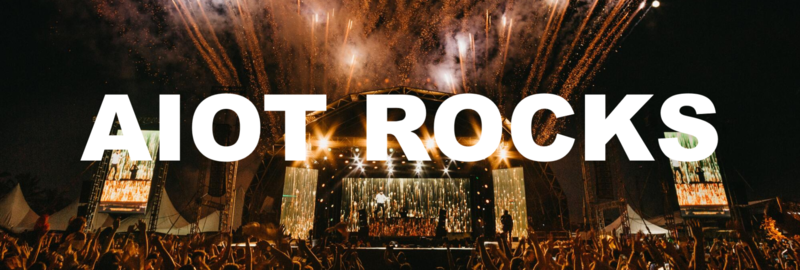The AIoT Playbook: Difference between revisions
No edit summary |
No edit summary |
||
| Line 3: | Line 3: | ||
File:0.2 AIoT Overview.png|1200px|frameless|center|AIoT Framework Overview | File:0.2 AIoT Overview.png|1200px|frameless|center|AIoT Framework Overview | ||
rect | rect 788 412 1230 602 [[Digital_OEM|More...]] | ||
rect | rect 863 597 1401 818 [[Digital_Equipment_Operator|More...]] | ||
rect | rect 748 808 1220 984 [[Hybrid_Models|More...]] | ||
rect | rect 848 1019 1320 1290 [[Business_Strategy|More...]] | ||
rect | rect 1591 387 2154 607 [[Business_Model_Design|More...]] | ||
rect | rect 1561 552 2043 728 [[Co-Creation|More...]] | ||
rect | rect 1772 673 2149 833 [[Sourcing_and_Procurement|More...]] | ||
rect | rect 1581 778 1983 919 [[Service_Operations|More...]] | ||
rect | rect 1913 868 2179 1004 [[Service_Operations#Sales|More...]] | ||
rect | rect 1621 1014 2128 1285 [[Business_Execution|More...]] | ||
rect | rect 2460 366 2912 547 [[Product_Architecture|More...]] | ||
rect | rect 2390 522 2851 688 [[AIoT_Data_Strategy|More...]] | ||
rect | rect 2625 658 3102 818 [[AIoT_DevOps_and_Infrastructure|More...]] | ||
rect | rect 2425 773 2736 929 [[Trust_and_Security|More...]] | ||
rect | rect 2716 868 3007 1019 [[Verification_and_Validation|More...]] | ||
rect | rect 2425 1024 2927 1290 [[AIoT_Framework|More...]] | ||
rect | rect 3268 452 3815 648 [[Artificial_Intelligence_101|More...]] | ||
rect 3509 648 3946 818 [[Digital_Twin_101|More...]] | |||
rect 3509 818 3946 989 [[Internet_of_Things_101|More...]] | |||
rect 3198 1024 3665 1290 [[AIoT_Framework|More...]] | |||
desc none | desc none | ||
Revision as of 20:41, 11 June 2021

The AIoT Framework provides good practices and project templates for successfully building smart, connected products and solutions with Artificial Intelligence (AI) and the Internet of Things (IoT) - or Artificial Intelligence of Things (AIoT). The focus is on integrating physical products or assets with intelligence in the field (Edge AI), connectivity (IoT) to the cloud, creating Digital Twins (DT), and creating Swarm Intelligence with AI in the Cloud. Not all AIoT solutions will always have all of these elements, but the common denominator is the combination of AI and IoT.
The AIoT Framework aims to support a holistic and realistic approach for creating and operating AIoT-enabled products and solutions, including:
- Business Model Design:
- What are the specifics of AIoT-enabled business models? This is addressed by looking at different AIoT-scenarios, especially the Digital OEM and the Digital Equipment Operator
- What tools and templates support the design of AIoT-enabled Business Models?
- AIoT-enabled Product/Solution Design: What are the different viewpoints you need to address from a design point of view, and how to map them to an executable, agile story map?
- How to source and/or co-create the different elements which constitute the AIoT-enabled product/solution?
- How to ensure agility and continuous improvement in a multi-supplier environment which needs to include not only software development, but also AI and custom hardware development?
The framework is provided as a wiki with a highly visual navigation structure. Most diagrams allow you to click on areas of interest to get a more detailed description. Click on the boxes in the diagram above to try it out.
Agile AIoT Toolbox
The Agile AIoT Toolbox brings together the different perspectives required for implementing an AIoT-enabled products or solution in the most possible agile way, taking into consideration the cultural, technical and physical limitations of a typical AIoT initiative.
About the AIoT Framework
The AIoT Framework provides good practices for AIoT product and project managers, helping to improve quality and customer centricity, reduce risks and costs, and shorten time-to-market.
The Why / What / How / Who of AIoT
A guiding principle of the AIoT Framework are the why, what, who and how perspectives, inspired by the work of Simon Sinek [1] as well as the St. Gallen IoT Lab [2]:
- Why: Better understand and articulate the purpose and AIoT-enabled business outcomes
- What: What can be achieved with AIoT in terms of smart, connected products and solutions
- Who: Roles and responsibilities in the context of an AIoT initiative
- How: Project blueprint for AIoT execution and delivery

About the AIoT User Group
The framework is managed by the AIoT User Group, which has driven the evolution of Ignite from a generic IoT framework towards an integrated AI and IoT framework. The group is focusing on experience sharing and best practices for AIoT, including Ignite Talks AIoT Case Studies, AIoT Boot Camps and development of the AIoT Framework.
How to get involved?
There are a number of different ways to get involved:
- Follow us on LinkedIn
- Sign up to our newsletter
- Join one of our AIoT Unplugged sessions, where we meed to develop / enhance the AIoT Framework
- Sign up for AIoT training
See you around!



